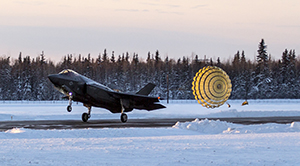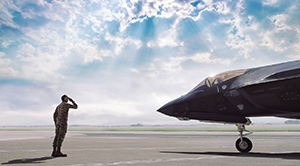News
How it Works: The F-35A Drag Chute System
February 17, 2021
Using a parachute to safely bring personnel, cargo or equipment to the ground is one thing. Using those same basic aerodynamic drag principles to bring a stealthy 5th Gen fighter jet to a jarring halt is another.
A team of engineers from Lockheed Martin and the U.S. and Norwegian government joined forces to develop the critical drag chute capability for the Royal Norwegian Air Force (RNoAF) and now the Royal Danish Air Force, Royal Netherlands Air Force and The Belgian Air Component’s F-35As. The drag chute enables operators to safely and effectively land the aircraft on short, icy runways.
Let’s take a closer look at the F-35A drag chute system.
How it works:
With the exception of serial numbers and other surface markings, one F-35A tends to look like the next F-35A. However, a small, aerodynamic pod housed on the upper surface between the canted vertical stabilizers distinguishes Norwegian, Danish, Dutch and Belgian F-35As from other F-35s. The system is designed as a wing pylon so that the pod can be installed and removed with minimal time and effort. The pod contains the drag chute system that rapidly decelerates the F-35s after landing on the country’s short, icy runways. The pod is specifically designed to minimize effect on radar cross section and ensure the aircraft maintains stealth characteristics while flying.
Akin to the conventional parachute, the F-35 drag chute system is a device used to slow the motion of the F-35A and provide control and stability for pilots. The chute creates aerodynamic drag also known as air resistance. The F-35A drag chute uses the force of wind pushing in the opposite direction of the motion of the aircraft to safely land on short, wet and icy runways.
To deploy the chute, the pilot flips a switch up on the upper left side of the instrument panel. The switch activates hydraulic actuators that open the pod to release a Kevlar parachute. Once the aircraft is slowed sufficiently, the pilot flips the same switch down to release the drag chute as the aircraft comes to a stop.

